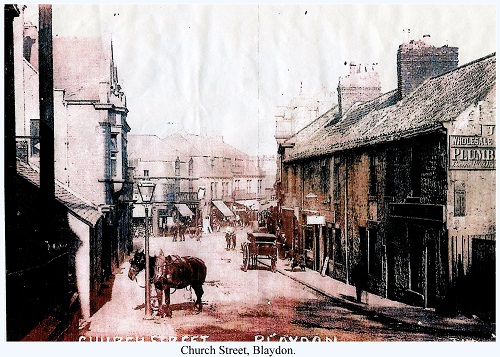
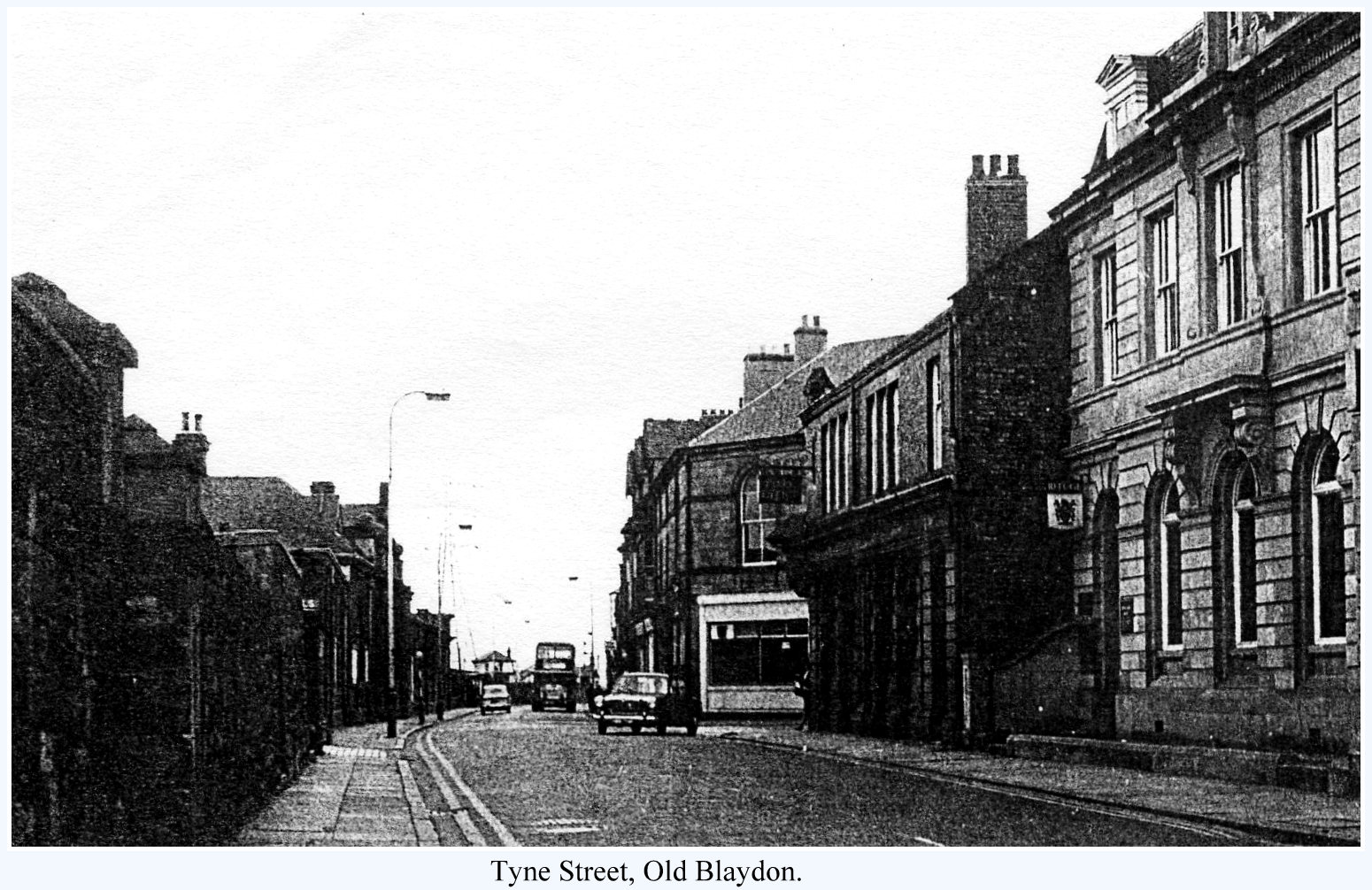
CANNY OLD BLAYDON


I was born in Blaydon in 1946. Many of my childhood and teenage memories relate to old Blaydon with its homely town square, shops and the surrounding streets of mostly terraced housing. What great character it had and what a strong sense of community existed there - everyone knew each other.
In the late 1960s/early 70s much of the old town was the subject of compulsory purchase orders (CPOs), demolition and clearance to enable a new, better road link from east to west and the building of a new shopping precinct in a 1960s style, brick built with flat roofs.
Many of the older folk of Blaydon now feel very regretful this happened and feel considerable nostalgia for old Blaydon.
The planning procedure seemed to be in two stages - the CPOs enforcing the demolition of both commercial and domestic properties, then the authority for 'stopping up' the various roads and streets which were to disappear. The following documents/maps poignantly show what used to exist and the quite massive clearance that occurred. A good proportion of the old town was affected. It was the entire triangular area bordered by Tyne Street/Railway Street to the north, Garden Street/Shibdon Road to the south and Edward Street to the east. The top map shows old Blaydon as it was pre demolition including, underneath, more detailed images of the areas immediately west and east of the central shopping street which was Church Street. Oswin Road should correctly be Oswin Street. Then below the London Gazette town planning notice of March 1971 (see right hand column). Then a 1970 map showing the cleared area awaiting the blocking off and removal of the various streets.
Further down are some photographs of the old places.
Thanks to local historian John Oliver and my son Stephen for help with the map data.
I've also included a few photographs of familiar places near to Blaydon that are now gone, which older folk will fondly remember. Thanks to those who have kindly sent these images. I'll add more as I get them.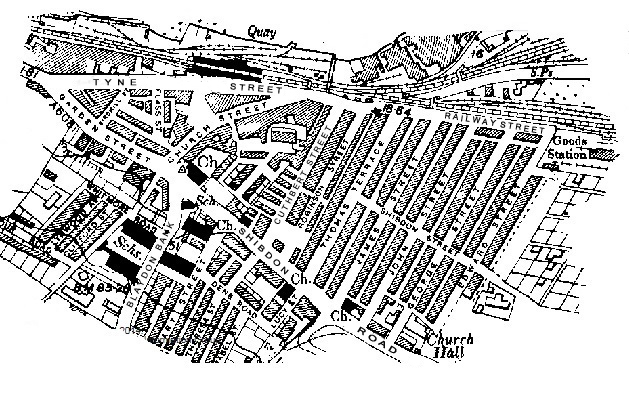
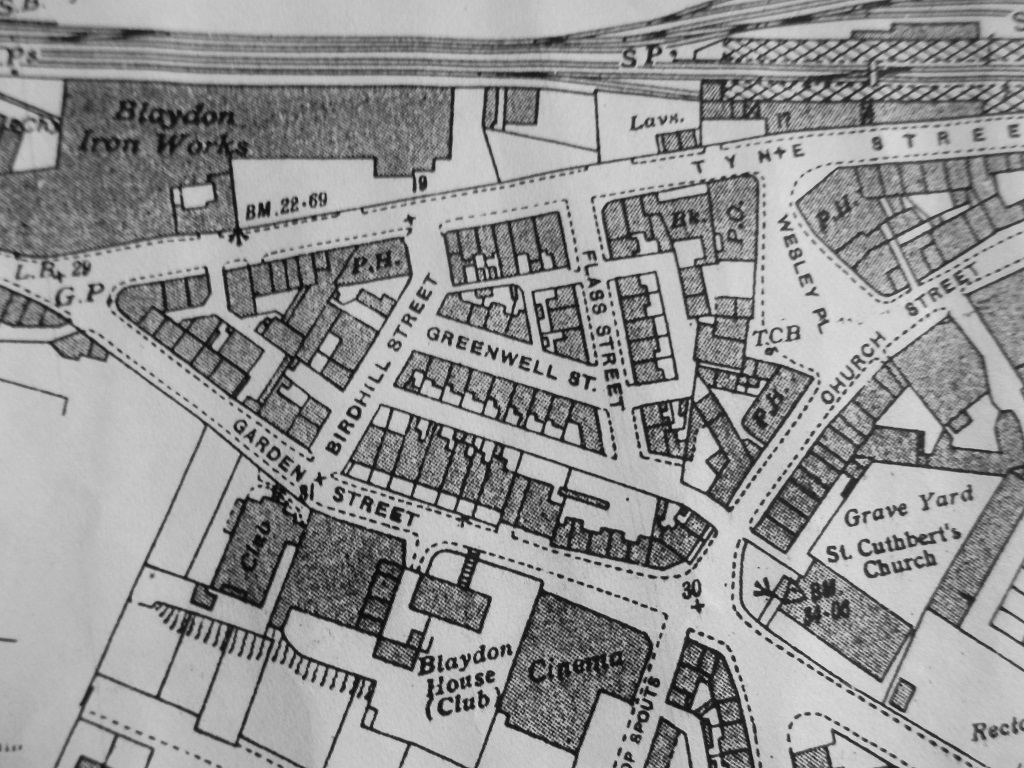
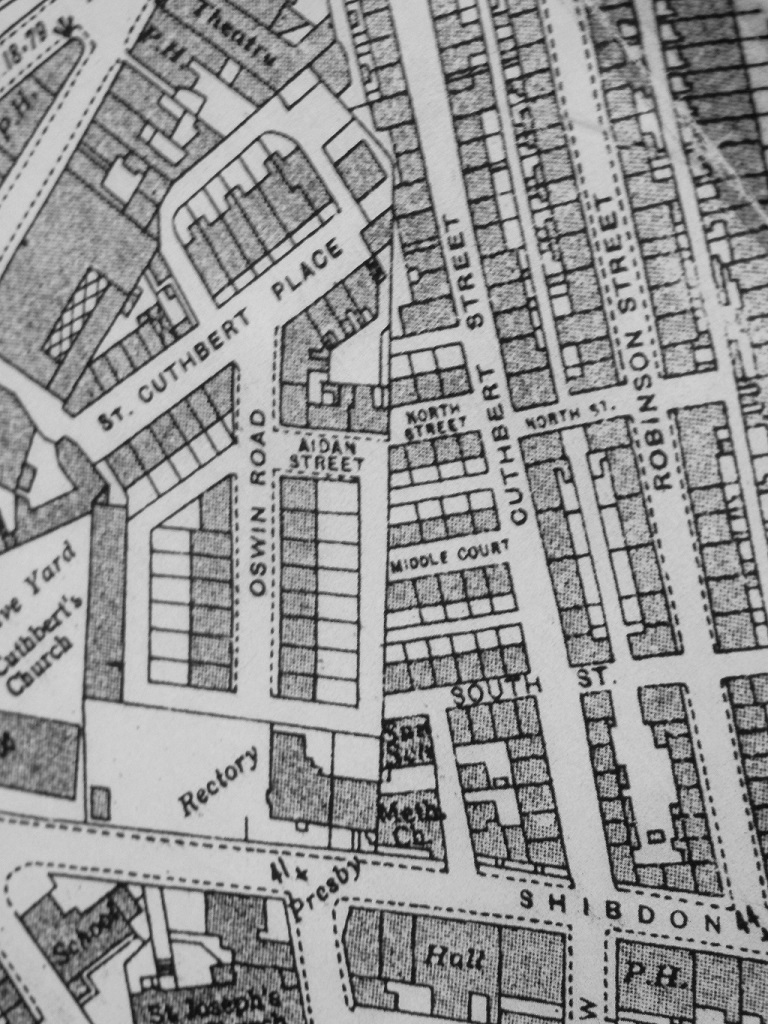
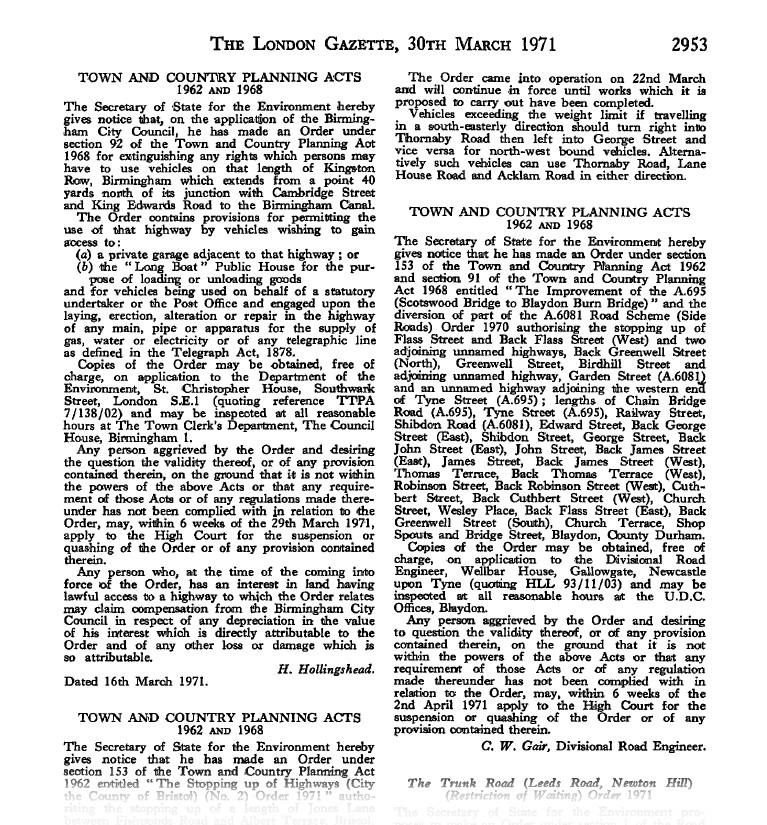
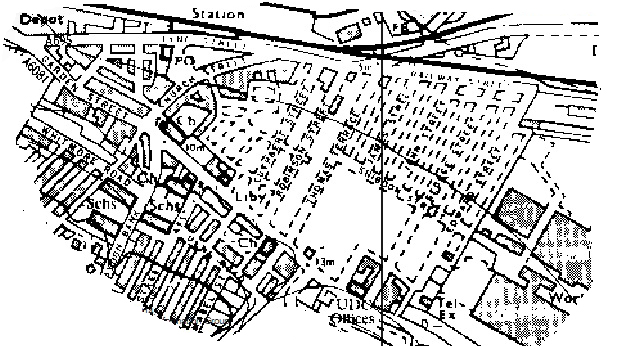
My song 'Canny Old Blaydon' is about my fond memories of the town as it was.
The song lyrics are below then underneath are a few photos of old Blaydon with sincere thanks to Gateshead Library Local History Archive (local studies on-line). My late father-in-law, Jack Teasdale, took the two railway photos, Thomas Terrace and the Jack Percy photo is also from his collection. The Coke Works and Power Station pics are my own. I'm hoping to locate more photographs over time and will add them below as I get them. There are a few very good websites with lots more old Blaydon area photos - see Links via the home page.
Song Lyrics - Canny Old Blaydon
Now Blaydon Town had a nice old square
But don’t look now for it’s just not there
No longer they gather in Wesley Place
As for all of the old shops, well now there’s no trace
I remember the Coop, people milling around
But that lovely old building was raised to the ground
With its drapers, its grocers, they called it 'the store'
What a shame it’s gone and we’ll see it no more
Jack Percy’s for bikes, for models and toys
Bees to the honey for us small boys
Taylor’s for wet fish, Tweddle’s for meat
Worleys the cake shop just couldn’t be beat
Callers and Palmers, Walter Wilson & Co.
All pulled down, they just had to go
Rogers and Lloyds Bank, Lennards and James’s
All gone now but remember their names
The Empire Theatre was built to last
Though its seats would shake as the steam trains passed
A black and white movie of days long ago
The curtain went up and on goes the show
John Armstrongs, The Blacksmiths, Red Lion and more
Pinches and Bruntons, The Rock and Laws Store
Railway Tavern, The Douglas and Greener’s for ale
All gone now so I’m telling their tale
A Rylatt’s pork sandwich, a Perna’s ice cream
Were they really that good, or was it a dream
For Pelletts and Murphy’s and Muir’s spare a thought
Billy Swan’s up those stone steps inside Rifle Court
Beveridge the printers, William Boyd auctioneer
No longer around, what a shame they’re not here
Joe Sap’s ice cream parlour for tea and a scone
Bonny Church Street and Tyne Street, they're sadly all gone
The Tripe shop and Gallons, the old Billiard Hall
The Pork Shop and Roberts - remember them all
Ganny Arthur’s, The Lime Yard, Shanleys and Todd
The Mechanics Hall where George Ridley was God
Cubies the chemist, at Marchettis a snack
Tea Company, Woolies, they won’t come back
Sally Army and brass band on each Christmas day
And the old Venture bus, it passed on its way
CODA – Aye Blaydon Town had a fine old square
But don’t look now for it’s just not there
It made way for progress, or so we were told
But sometimes its wise just to cherish the old.
Below are some photographs of Old Blaydon
(would love to get more if anyone would like to E Mail images via the home page)
Below left - junction of Church Street (left) and Tyne Street(right) looking up Church Street towards Wesley Place. The shop on the narrow corner between the two streets was John Armstrong's very popular clothing shop.
Below right - Wesley Place, the town square with the pinnacles of St Cuthbert's Church just visible in the distant right. On Christmas Eve, Christmas Day and on other occasions too, the Salvation Army Brass Band played lovely music to large gatherings here.
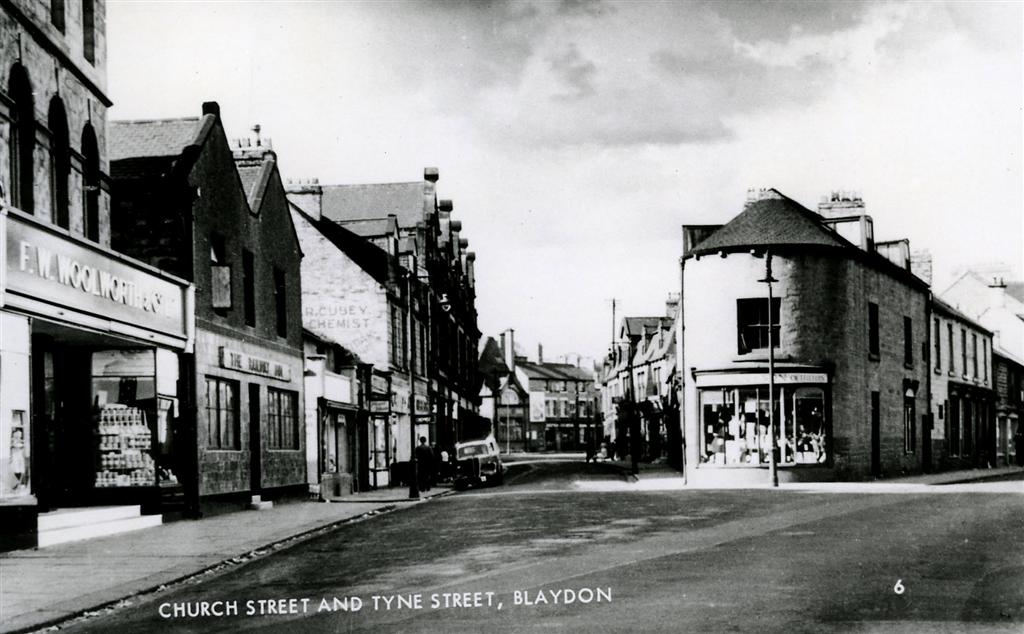
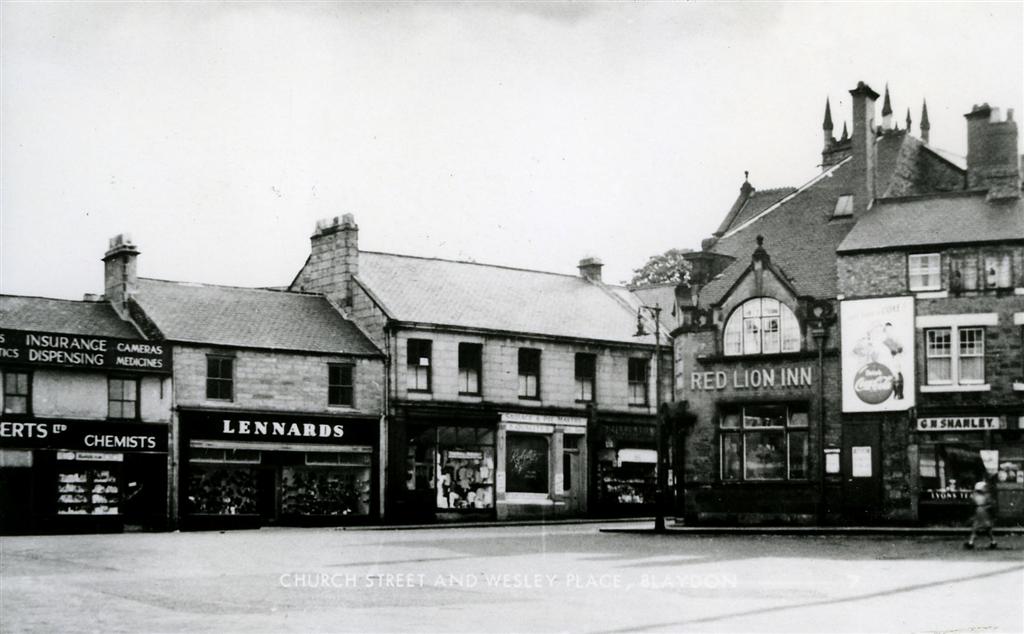
Below left - an old photo of Church Street looking south west from Wesley Place to St Cuthbert's Church.
Below right - Wesley Place, looking north west to Tyne Street and the railway station. Walter Wilson's general store on the right.
The very nice building on the left, with dressed stone, was the Post Office. It was very nice inside too. Not on this photo but just beyond the Post Office, up Tyne Street, was Lloyds Bank, another lovely building. The tall building far right is the Station Hotel, another elegant, dressed stone building which disappeared with all the rest.
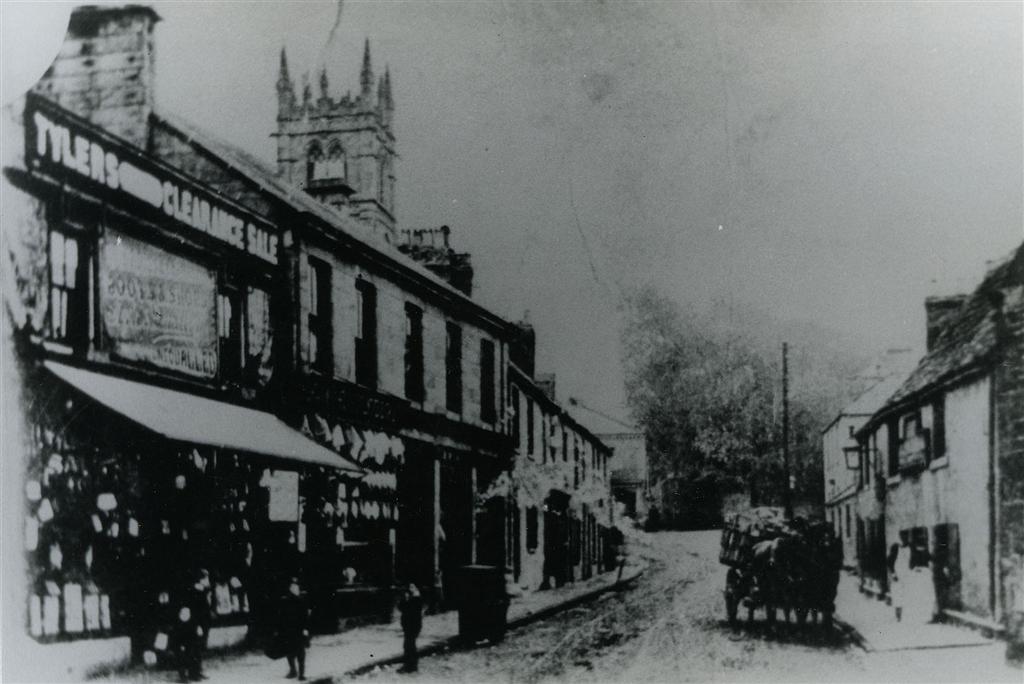
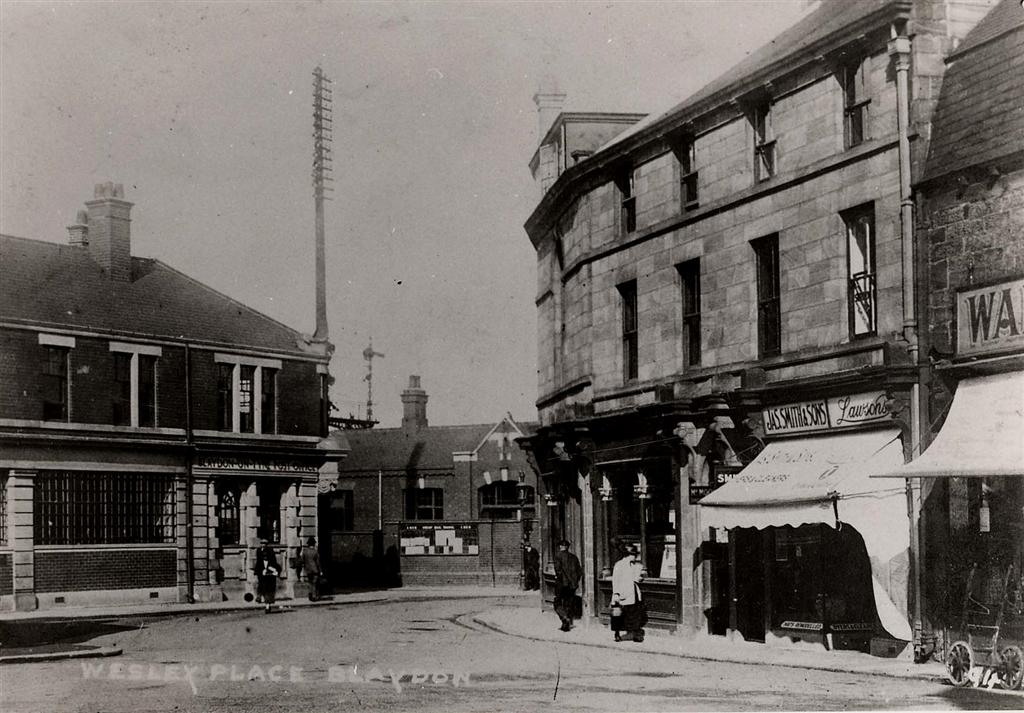
Below left - Church Street viewed from the junction with Tyne Street and looking south west. The shop on the corner was J Brown & Son, later John Armstrong. Both were clothing shops.
Below right - Tyne Street, looking west from the same junction. Just beyond Brown's shop on the corner was the Blaydon Hotel with its 'Long Bar' which ran from the Church Street entrance to the Tyne Street entrance.
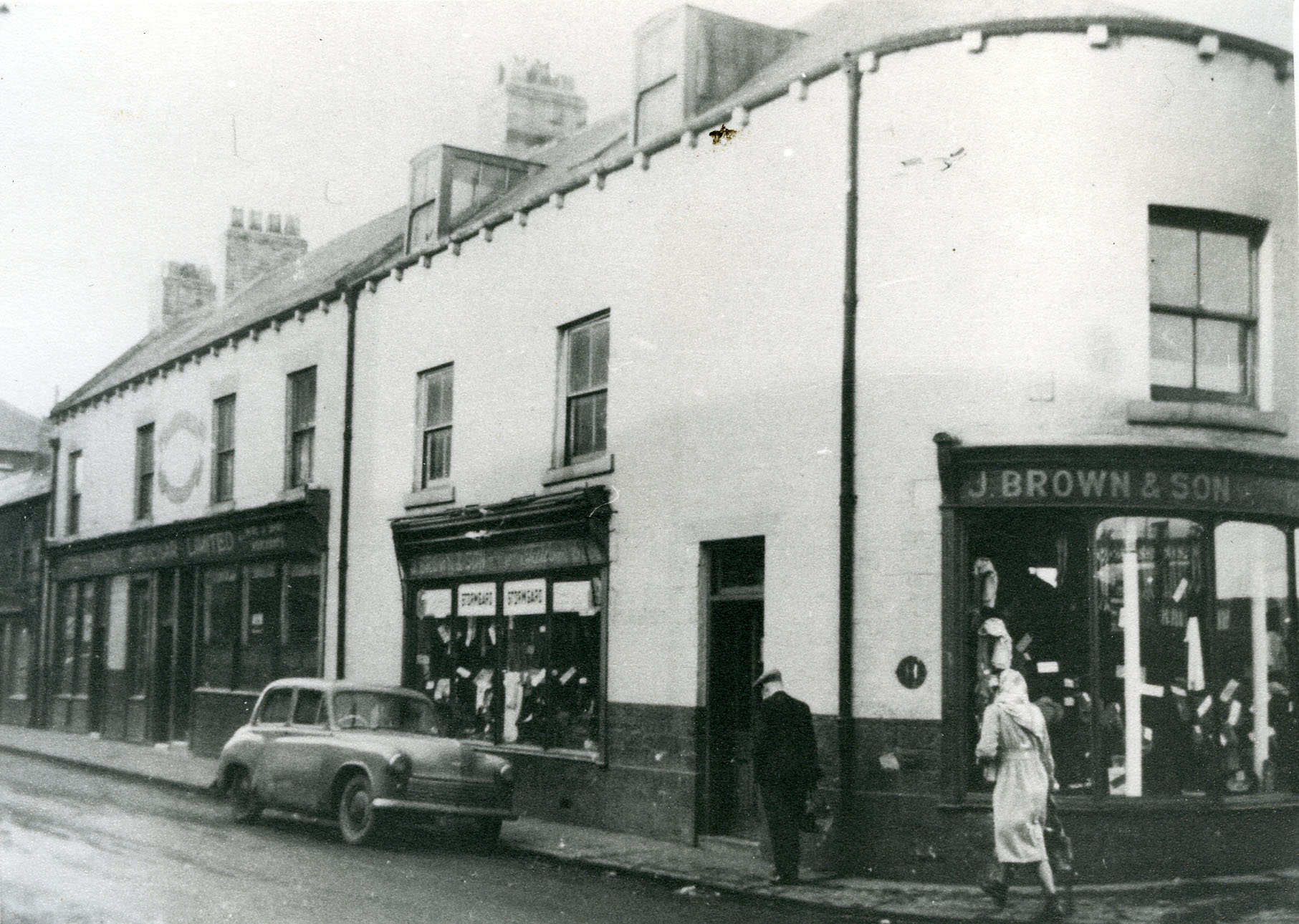
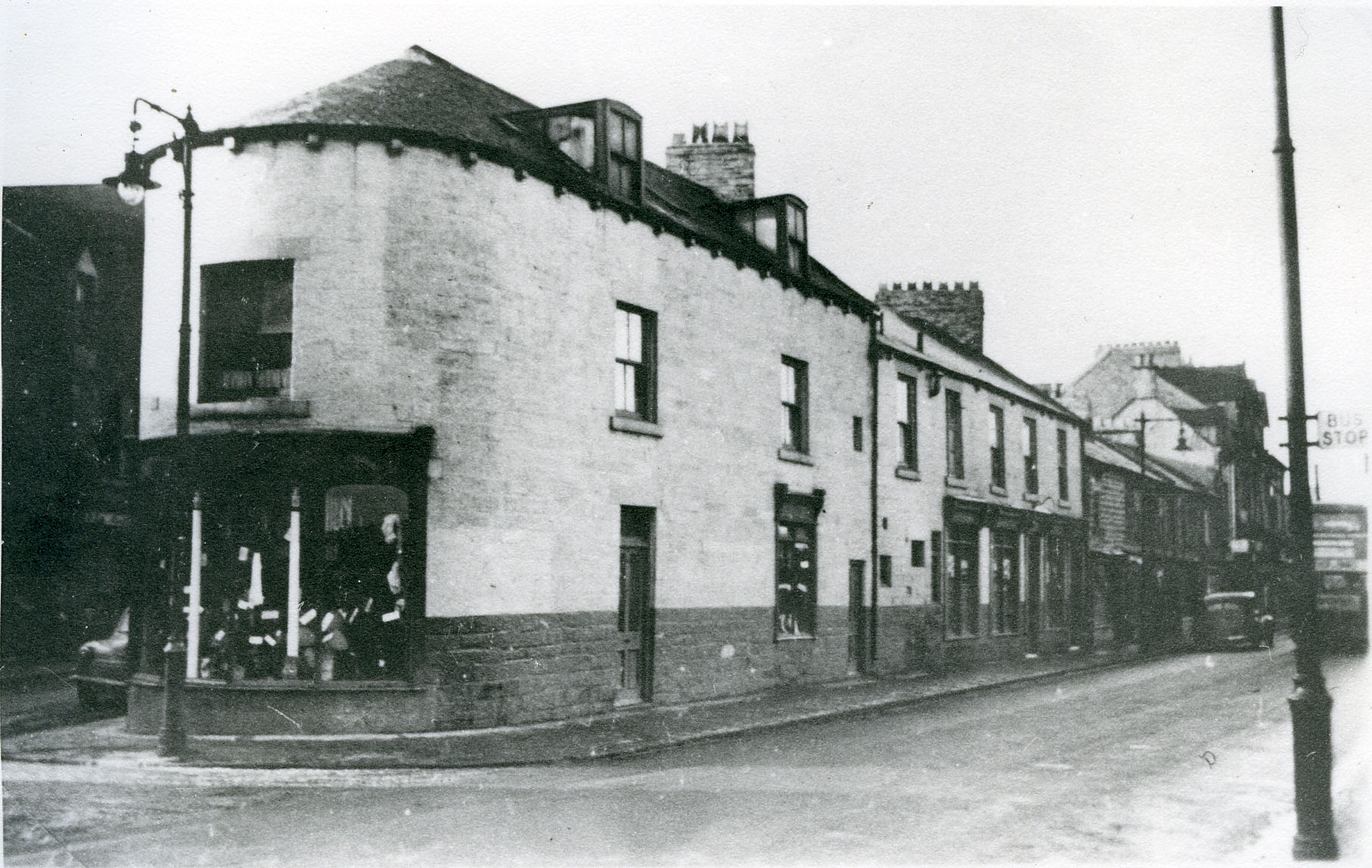
Below left - The Station Hotel on Tyne Street just opposite the railway station entrance. To the right, just off picture, is the entrance into Wesley Place, with the Post Office on the other side.
Below right - Looking east down Tyne Street from the western end (near Bridge Street) - an old photo from 1903.
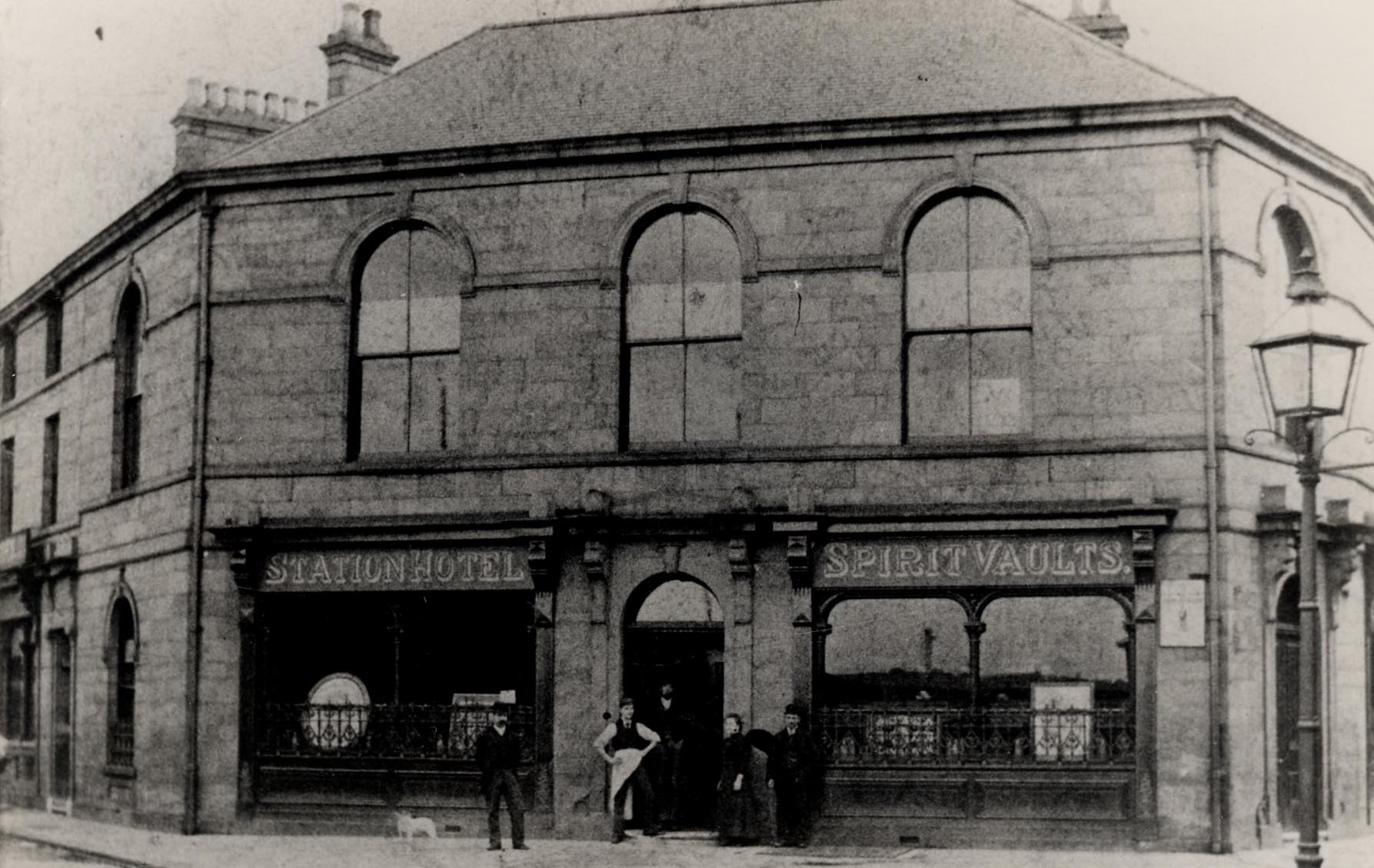
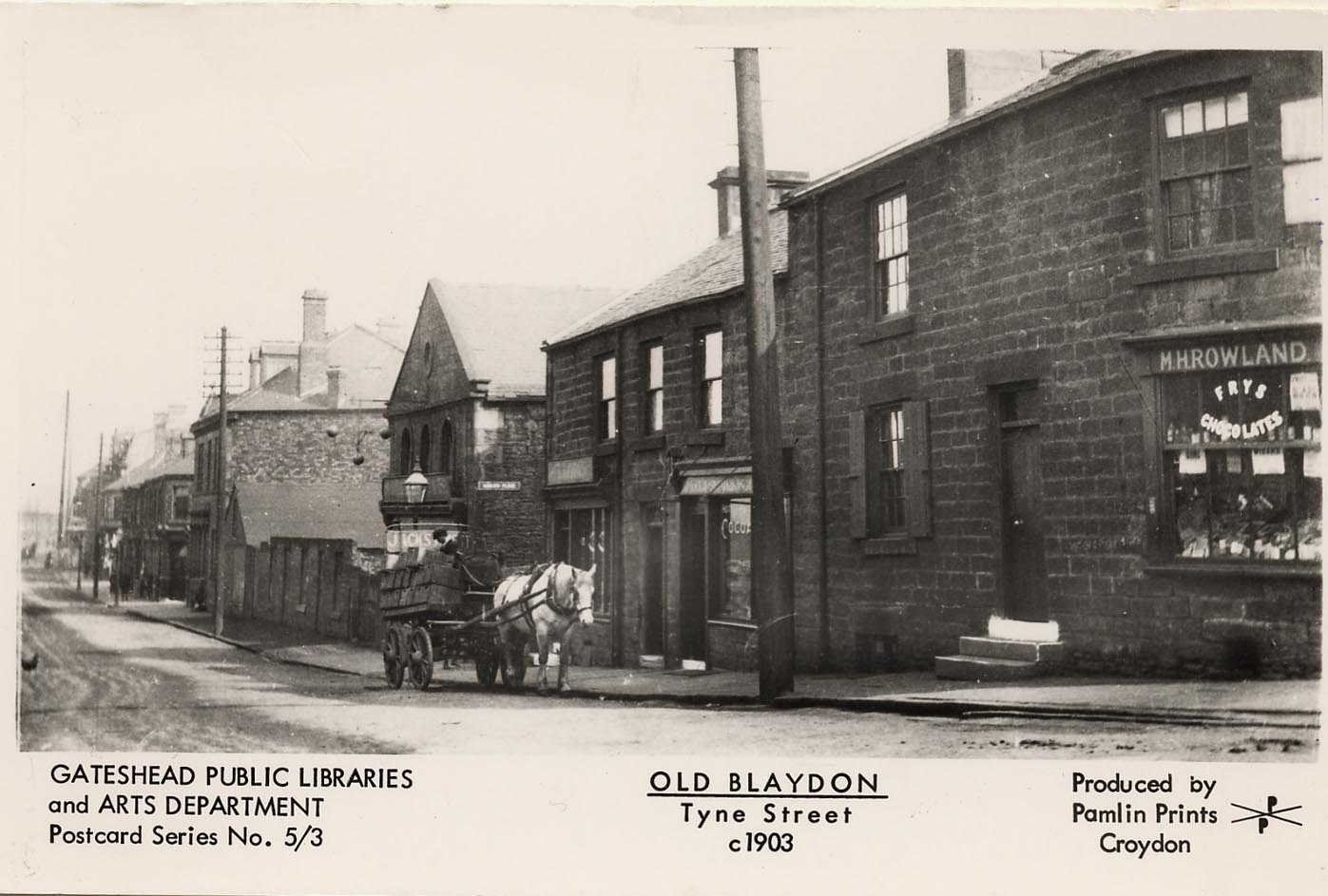
Below left - the railway crossing north east of the town centre.
Below right - steam shunter near the crossing at the junction between Tyne Street and Factory Road, leading to The Spike.
Both taken by the late Jack Teasdale probably in the 1960s.
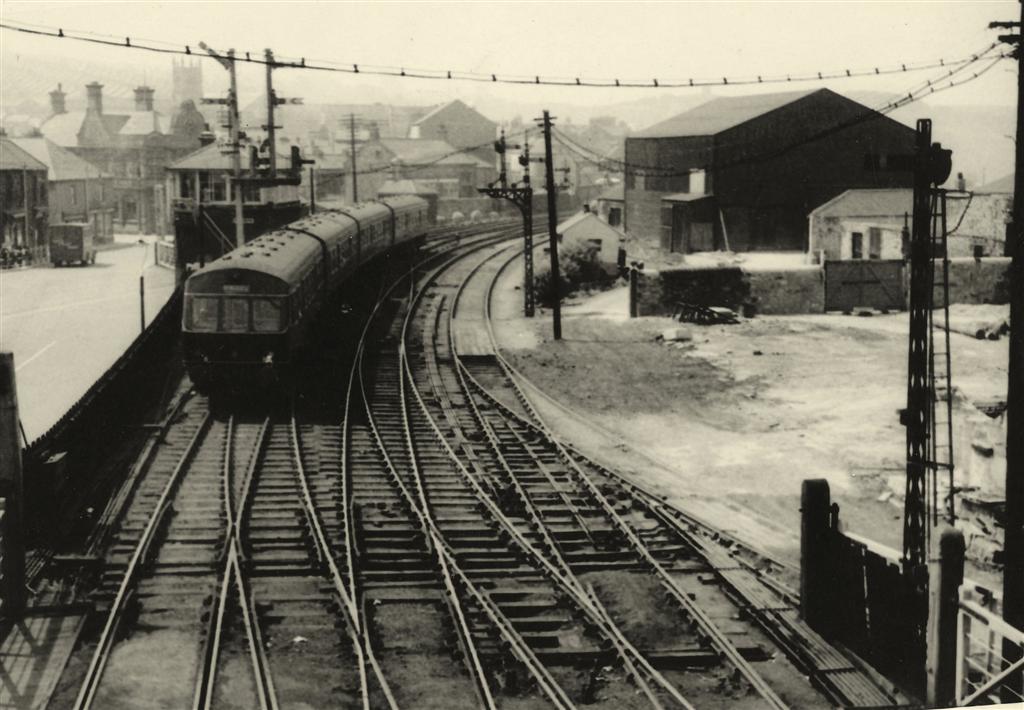
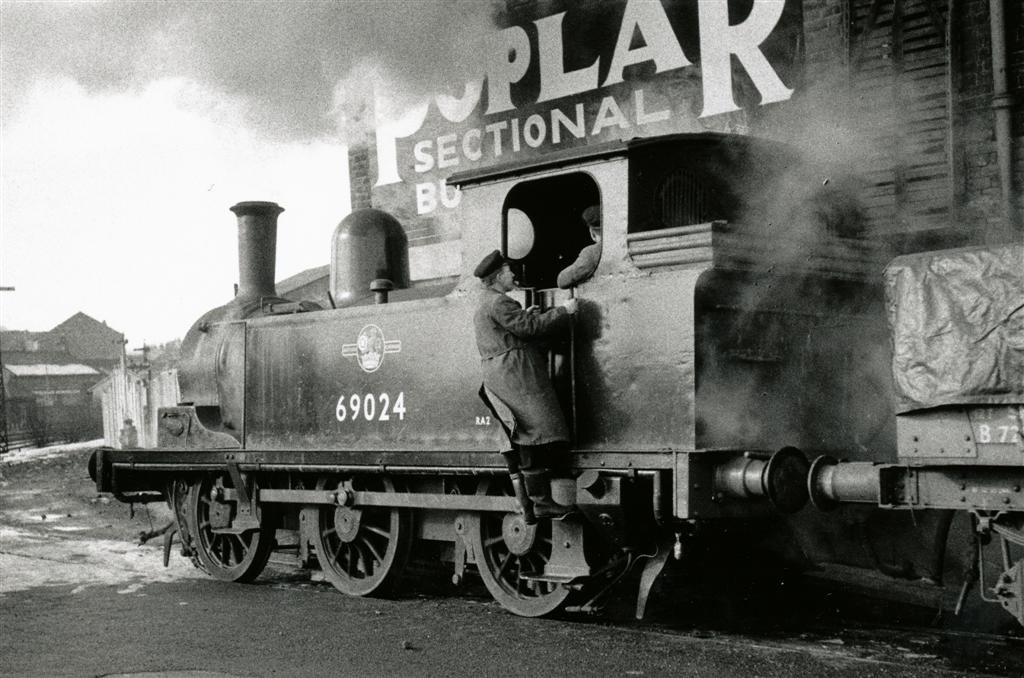
Below left - The Red Lion on the junction of Church Street and Wesley Place, Gordon Shanley's shop on its right.
Below right - The Terrace Inn on the junction of Tyne Street and Robinson Street.
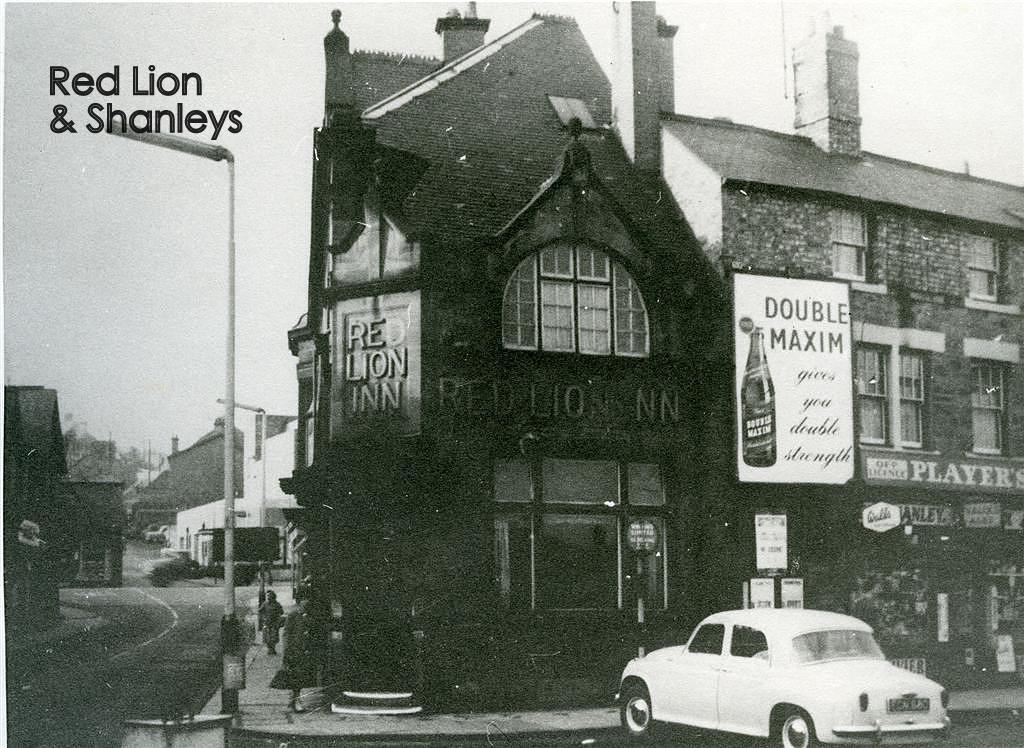
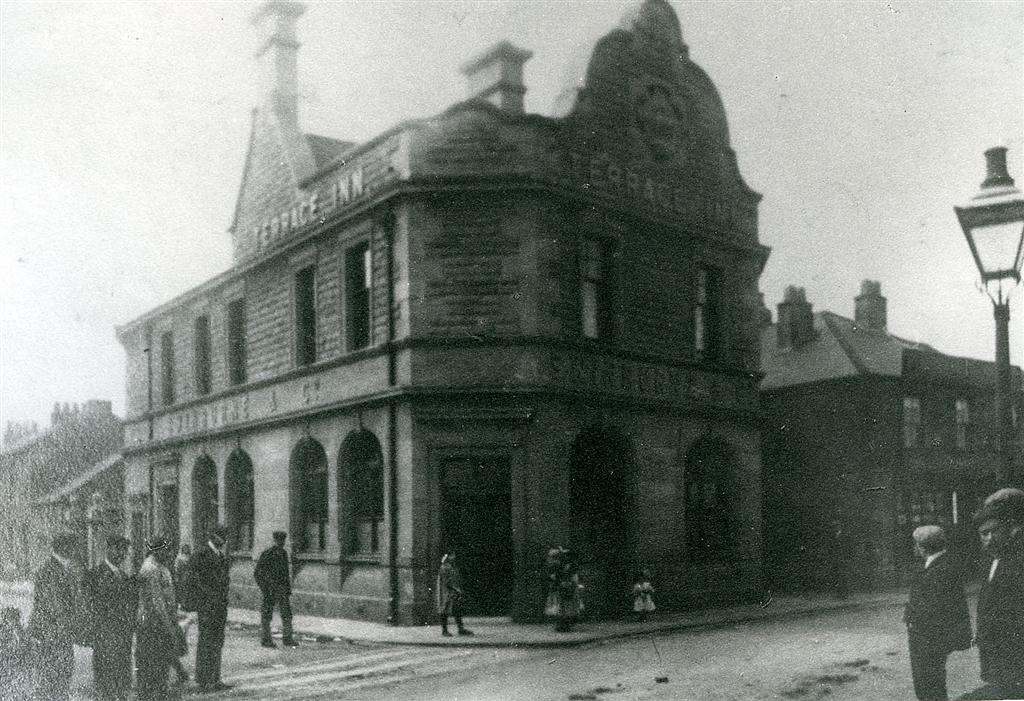
Below - Blaydon Co-op (The Store) on Church Street. It was one of the oldest in the country (Rochdale was first) and widely regarded as the most distinctive Co-op building of them all. Shame it wasn't preserved.
Regarding the Co-op here is a transcript from William Bourne's wonderful book 'The History of the parish of Ryton'.
The Blaydon Society is one of the oldest in the Co-operative Union. Mr. Holyoake, in his 'History of Co-operation' declares that, next to Rochdale, it is the most remarkable store in England. It has grown from a house to a street. Perhaps no man had more to do with the formation of the store than Mr. Joseph Cowen. A number of shrewd and intelligent men met weekly in the Mechanics' Institute of the village, when Mr. Cowen read portions of Mr. Holyoake's 'History of the Rochdale Pioneers' and impressed them with the wisdom of the Co-operative movement, and the utility of the 'store'. The Blaydon Society was commenced in the year 1858, in a cottage situated in Cuthbert Street. The premises soon proved too small and the store relocated to much larger premises on Church Street.
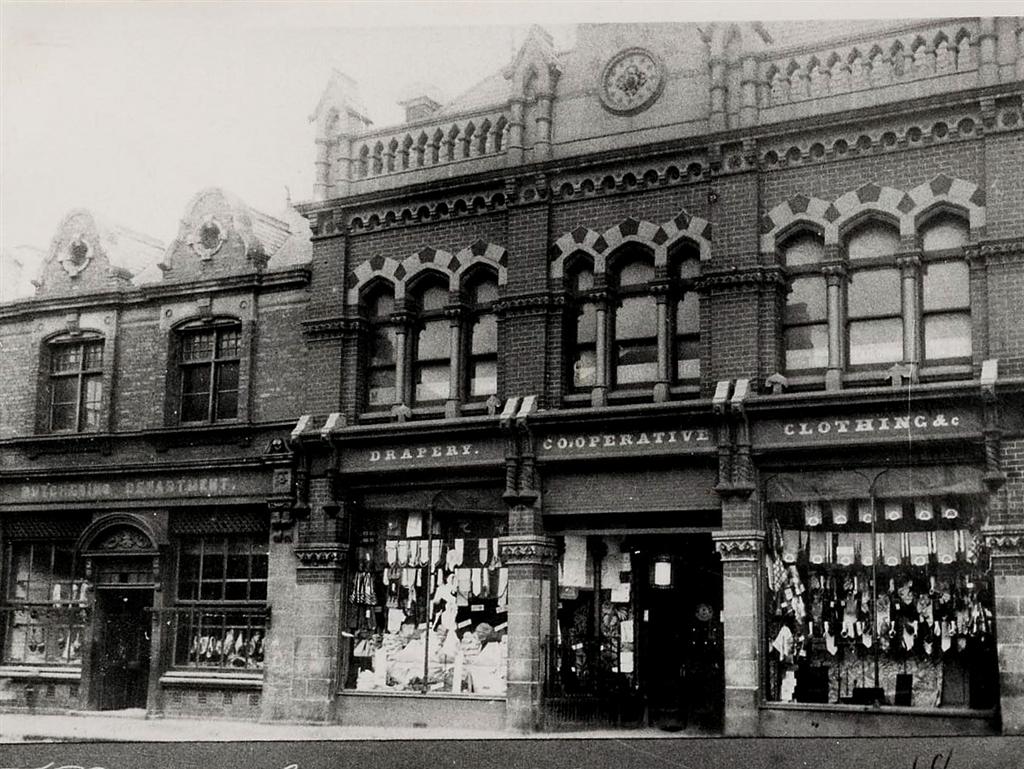
Below - a very early photo of Blaydon 'Mechanics Hall' as mentioned in the Blaydon Races song. The Mechanics Institute was on Tyne Street and existed from 1853 to 1877. After its decline and closure it was converted and used as the Co-operative Society's Pork Butchers shop.
I well remember the wall plaque and wonder if it was saved at the time of demolition?
Here is a further transcript from Bourne - The Blaydon and District Co-operative Literary Institute. Since 1847 there has been a Mechanics' Institution in the village. In the year 1852, a large and handsome building was erected by subscription. The foundation stone was laid in May of that year, by Mr. Blackett, M.P. and it was opened in Sep tember. The cost of the erection was £600. In the early days of the Institution, the late Mr. Thomas Vallance, keelman, was president, and Mr. James Eadie, secretary. In 1875 lt became the property of the Blaydon and District Co-operative Society, at a cost of about £1300, and the Institute became free to all members of the society, at present numbering 4114. It is a commodious structure, comprising library, reading room, and lecture hall. The news room is well supplied with the various metropolitan and provincial journals and magazines, and the library contains upwards of 2200 volumes. There are also science and art classes, which are fairly well attended during the winter months.
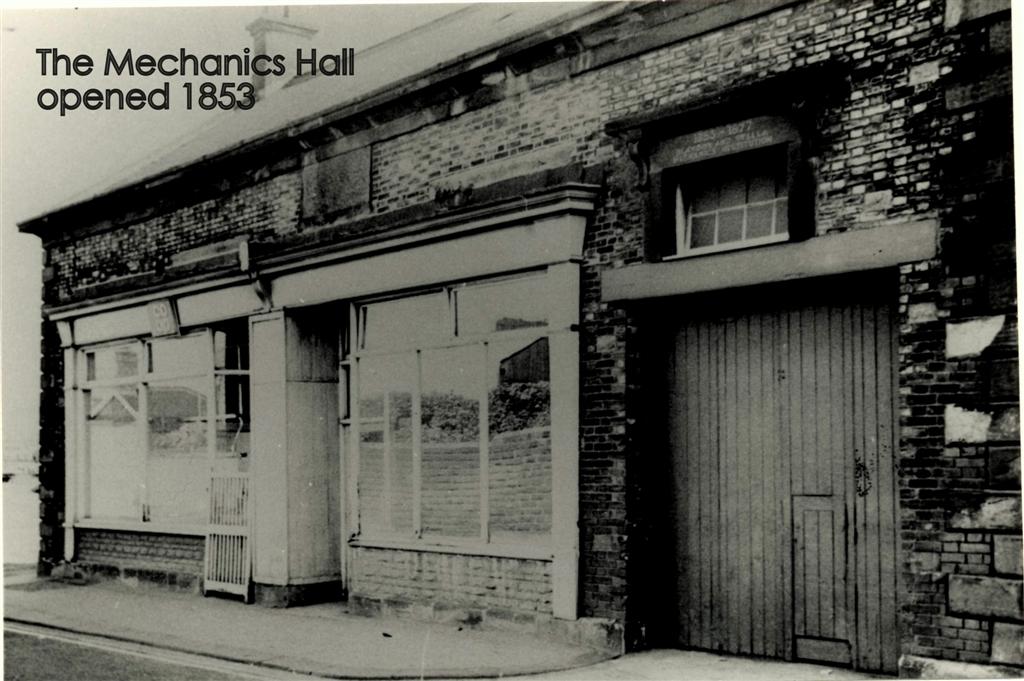
Below - Jack Percy's wonderful shop on Church Street. He sold models, bicycles and toys. Jack has the handlebar moustache, he was always smart. Jack Teasdale left and John Lodge centre. They are looking at Jack Teasdale's award winning model aeroplane. This photo is from the late Jack Teasdale's collection. Also an earlier photo with a younger Jack Percy, from Spiker Ray Cameron's collection of photos.
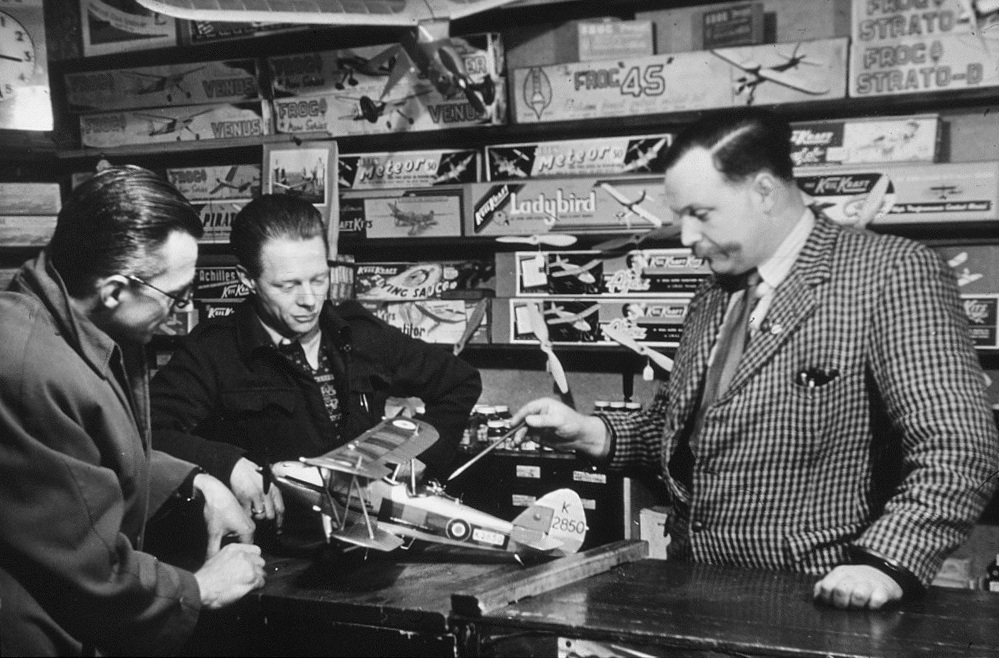
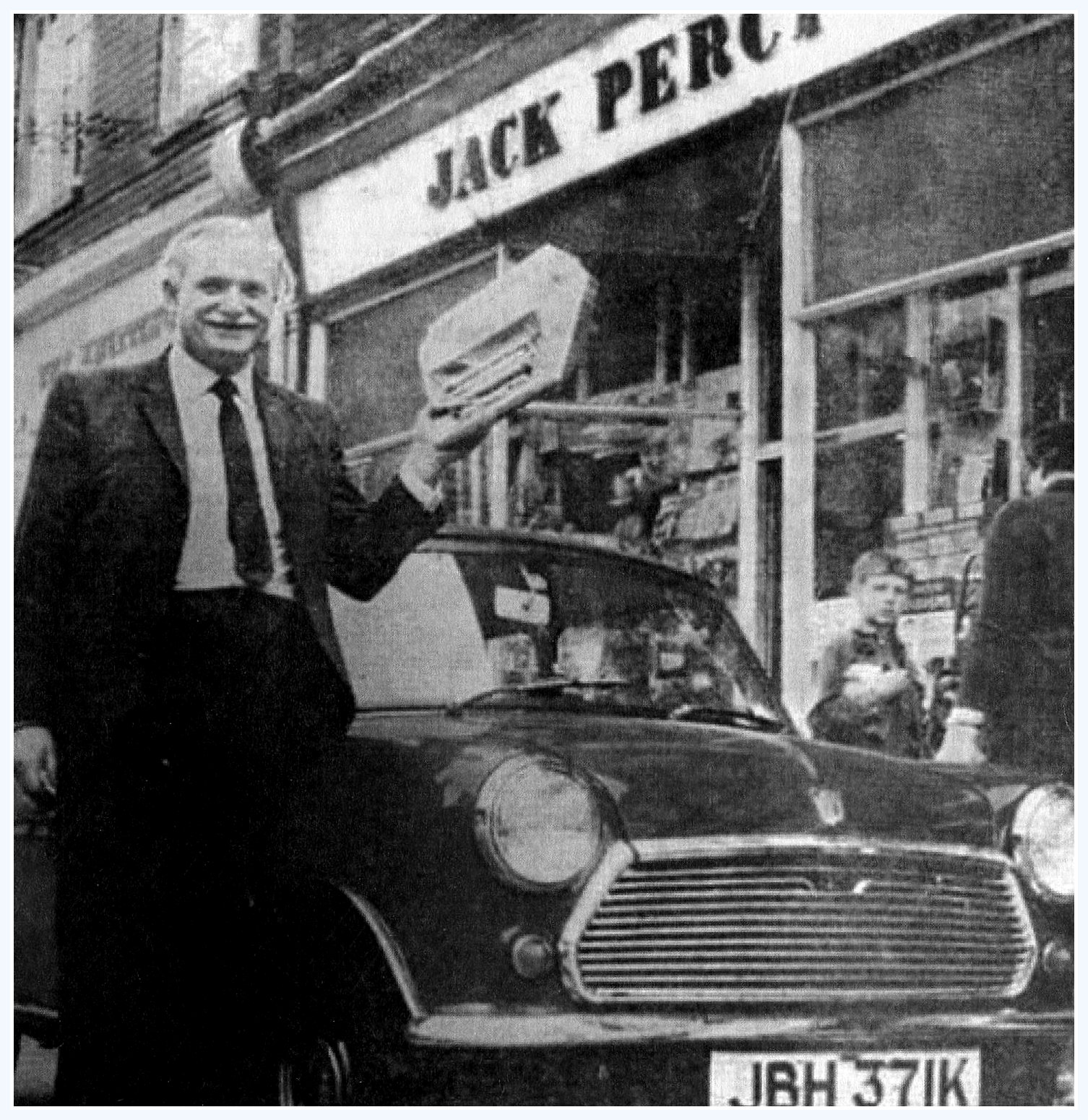
Below - a very early photo of Blaydon Railway Station.
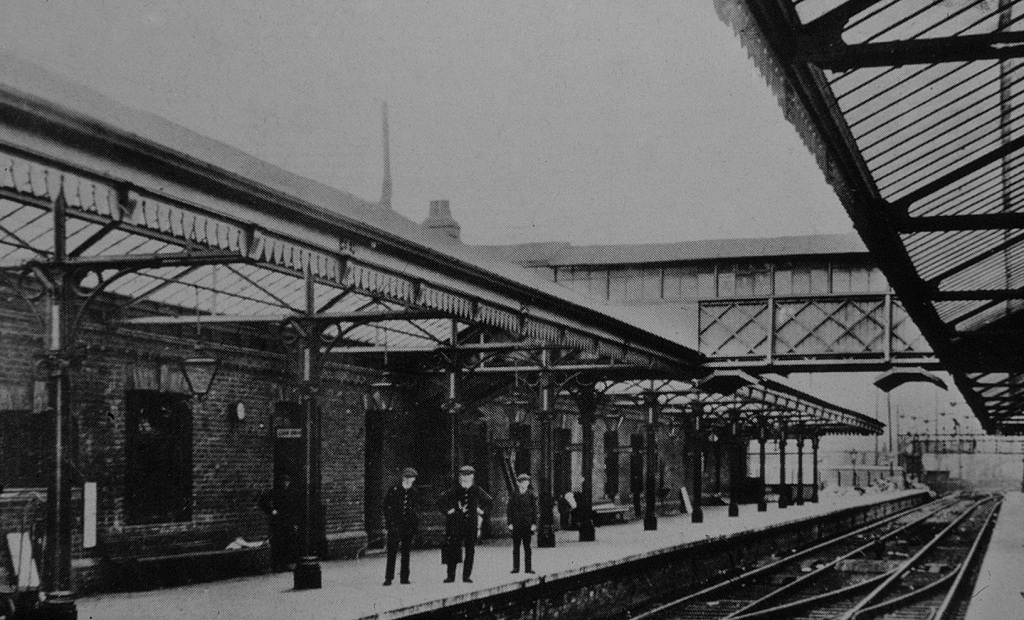
Below - The Empire Theatre and Plenders were at the northern end of Church Street just before joining Tyne Street. The Empire was, for most of its life, a cinema but in earlier days it did function as a theatre featuring live performances by artists such as popular singer Mary Hagen. The very successful and lucrative period of Victorian Music Hall faded with the growth of cinema and many music halls were modified to cinemas. One of the big companies which built up a roster of music halls was Moss Empires who named their establishments 'Empires' (eg. Sunderland Empire). I wonder if Blaydon's 'Empire' had any connections with Moss? Does anyone have the answer? In the depression era of the 1930s, children could go to matinees by paying with a few jam jars. The local joke was that the theatre seats shook when steam trains went past. It eventually closed and became a Woolworths store. You could still tell it had been a theatre - the wooden floor had a slope on it from front to back.
Plenders building was eventually occupied by Callers furniture store.

Below - two photos of Thomas Terrace, one of the many terraced rows of old Blaydon, east of the town centre. The wiggly tree was a local curio. When I met my wife to be, she said she used to live in Thomas Terrace. I asked if she new of the peculiar twining laburnum tree and she said "that was in our garden". Its a small world!
Photos taken by the late Jack Teasdale.
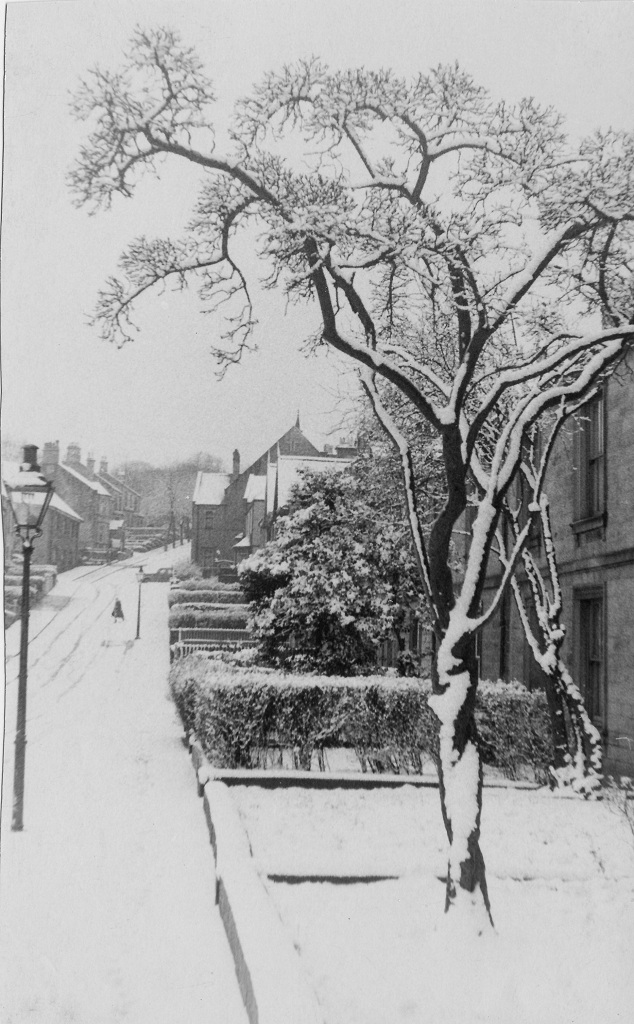

East of old Blaydon's shopping centre (Church Street, Tyne Street, Wesley Place) were the terraced rows where many of the Blaydon folk lived. They more or less ran parallel, between Tyne Street and Shibdon Road. West to east there was Cuthbert Street, Robinson Street, Thomas Terrace, James Street, John Street, George Street and Edward Street. In these terraced rows were quite a few small shops meeting the needs of the locals. One of these shops, at 3 Robinson Street, was Ashton's Fruit & Veg/Confectioners. Thanks to grand-daughter Christine Richardson, resident in Canada, for sending a couple of photos of her grandparent's shop and one of Meadow Dairy. Her grandfather’s name was Charles Ashton. He is in the photo on the left with her grandmother on his right, Mary Hannah (nee Gaul) known as Polly and another unidentified woman on his left, circa 1920s. The middle photo was at the time of the Queen's coronation - 1953. Charles was also manager of Meadow Dairy on Church Street and on right hand the photo he is standing hand on hips, facing forward. This photo probably dates to just before or just after the great war. The Meadow Dairy shop continued at least into the 1950s and was situated in Church Street, opposite the Red Lion.
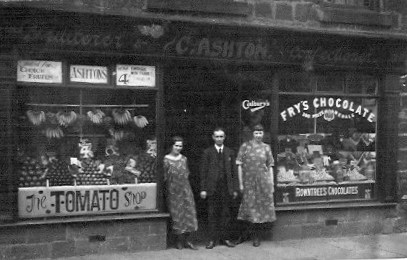
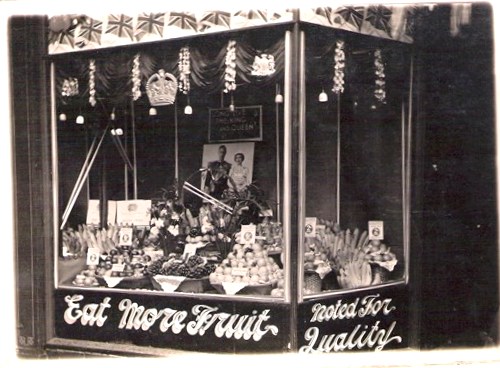
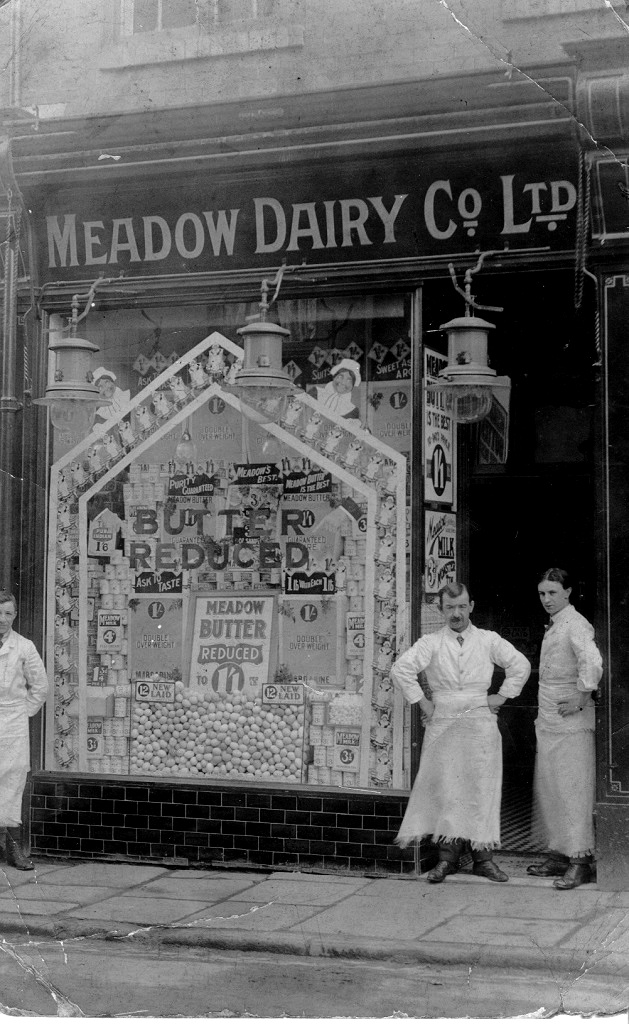
Below - to the east of Blaydon was Derwenthaugh Coke Works. My father worked there from the 1950s. The railway line running down to the confluence of the rivers Derwent and Tyne, to Swalwell staithes, was an old wagonway. It was said to be the oldest stretch of continually working railway IN THE WORLD. So what did they do? Dig it up!!
Photo taken by Roly Veitch - 1969.
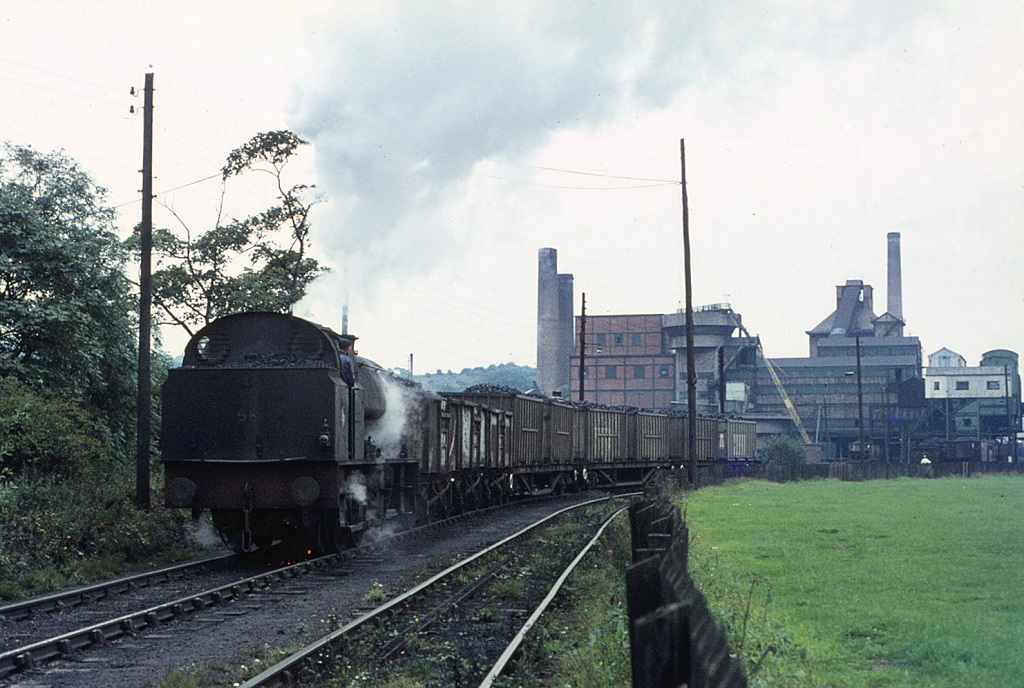
Below - Stella South Power Station, now gone. This was Stella Haugh, the site of the Blaydon Races in its final period from 1887 to 1916. A new housing estate is now being built there. You can just see Stella North Power Station too, over the river on the right.
Photo taken by Roly Veitch - 1969.
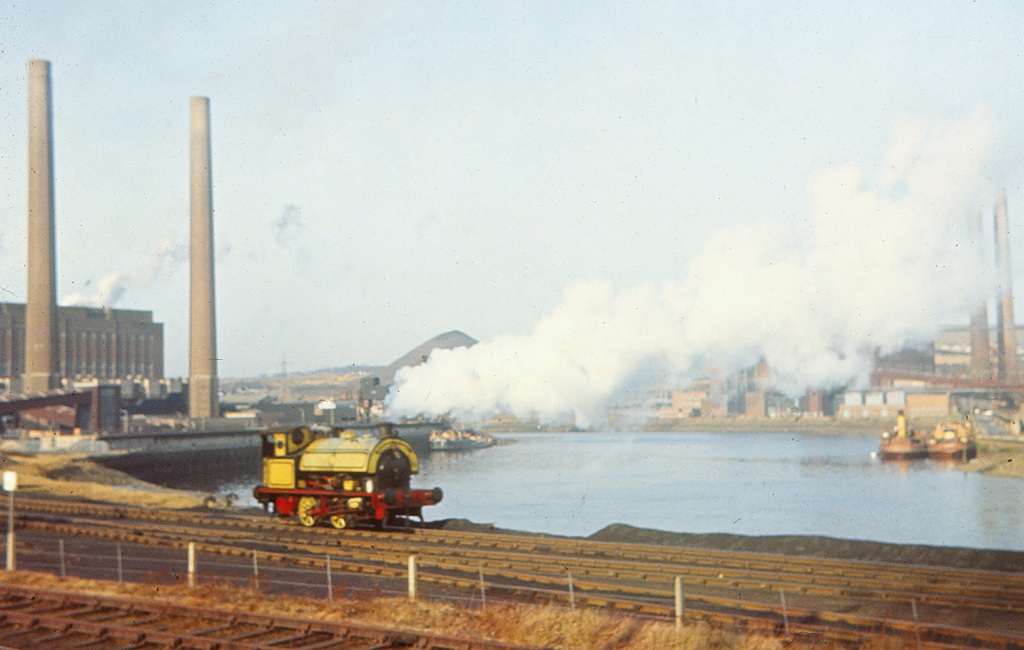
Below are some photos taken by Stephen Veitch at the 'Beamish Living Museum of the North' on 12th Jan 2014. They are not specifically of Blaydon but would be typical many of the old terraced houses of the town (and many other local industrial towns and pit villages) back in the late nineteenth to early twentieth century period. Illustrated are a typical 'back street' with yards and middens (an ash toilet with a wooden hatch at ground level for emptying it), the kitchen with coal fire/cooking oven, the washing mangle and 'poss' tub and the outside 'netty' (toilet).
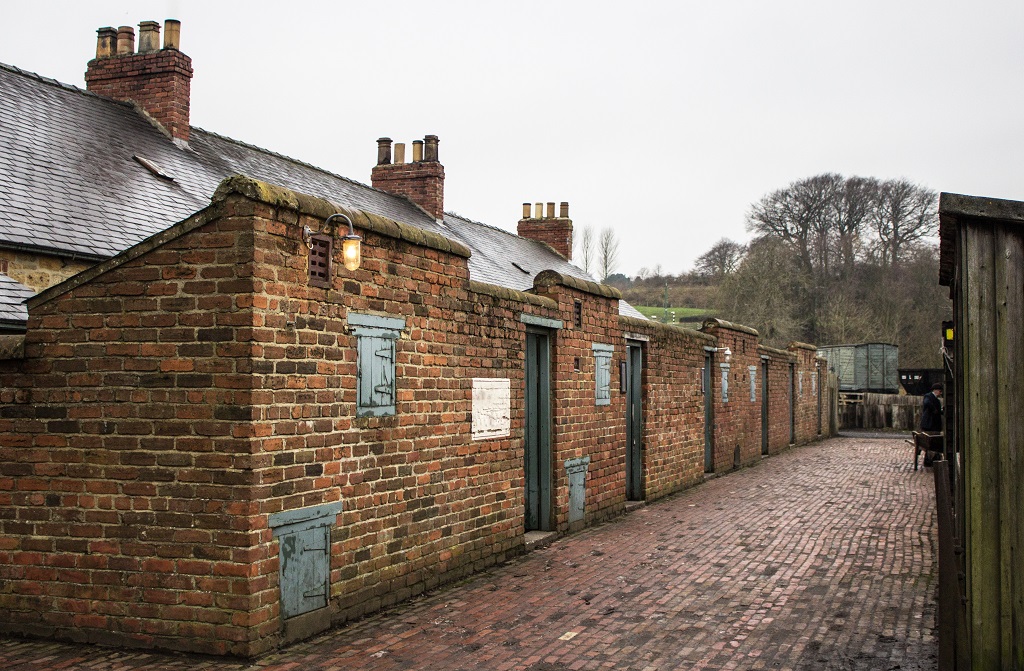
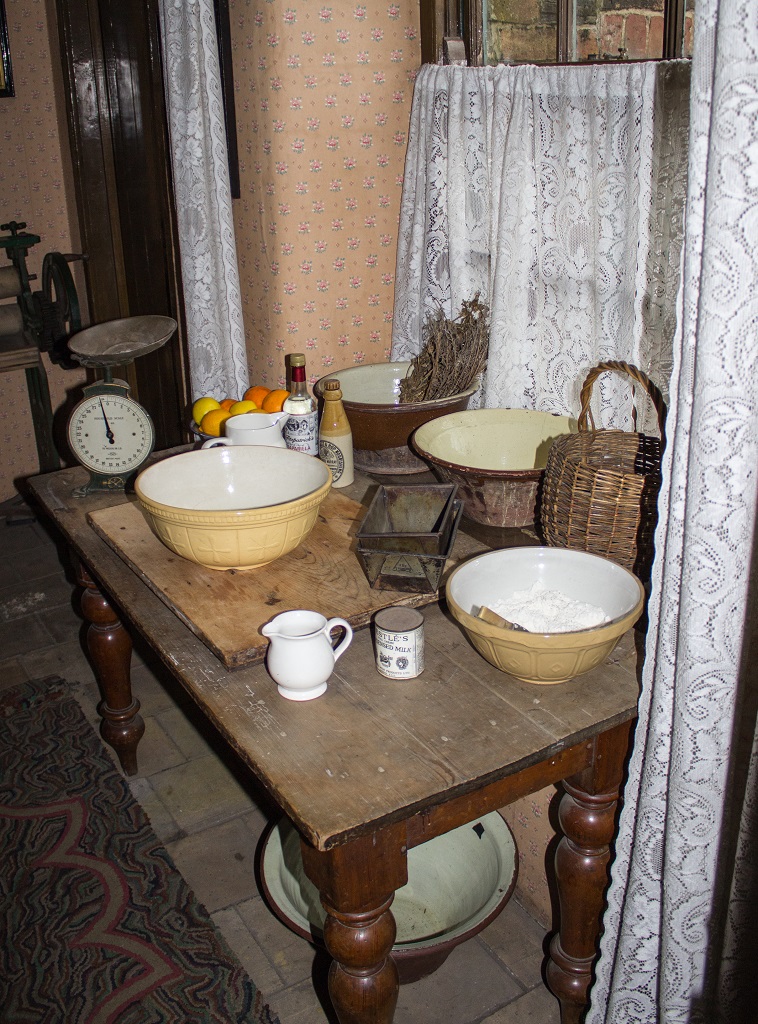
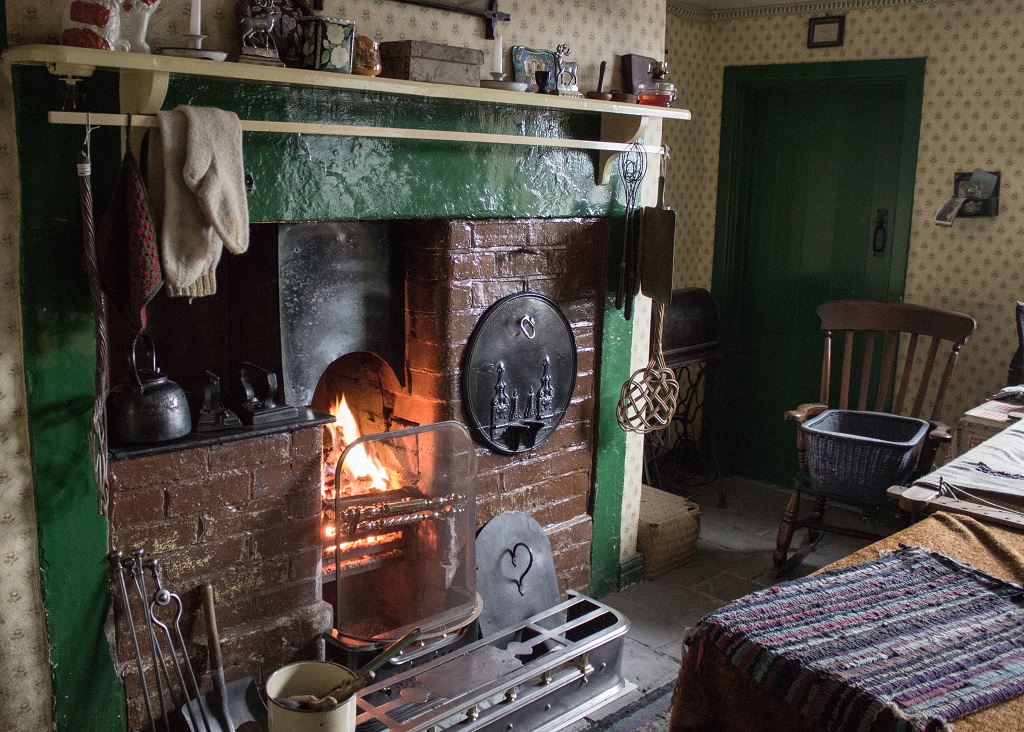
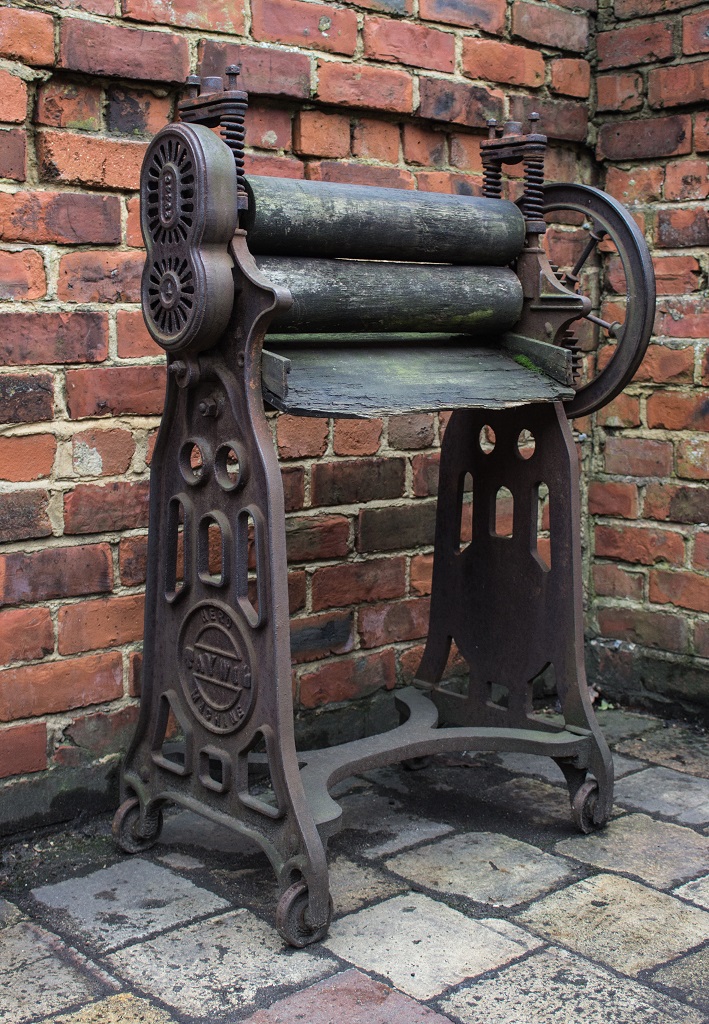
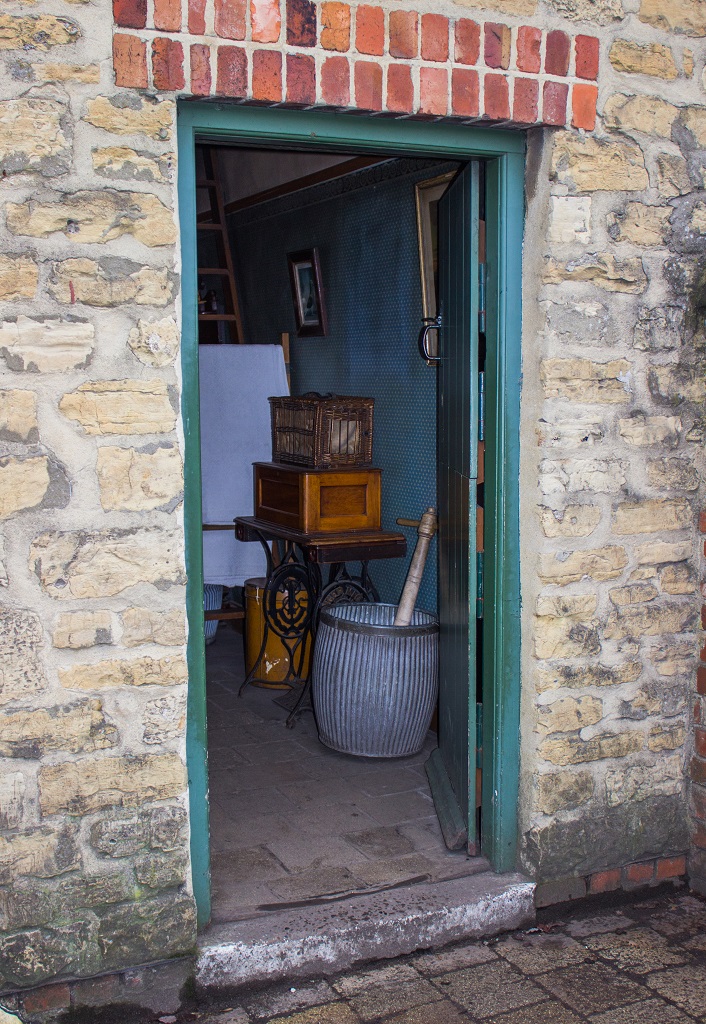
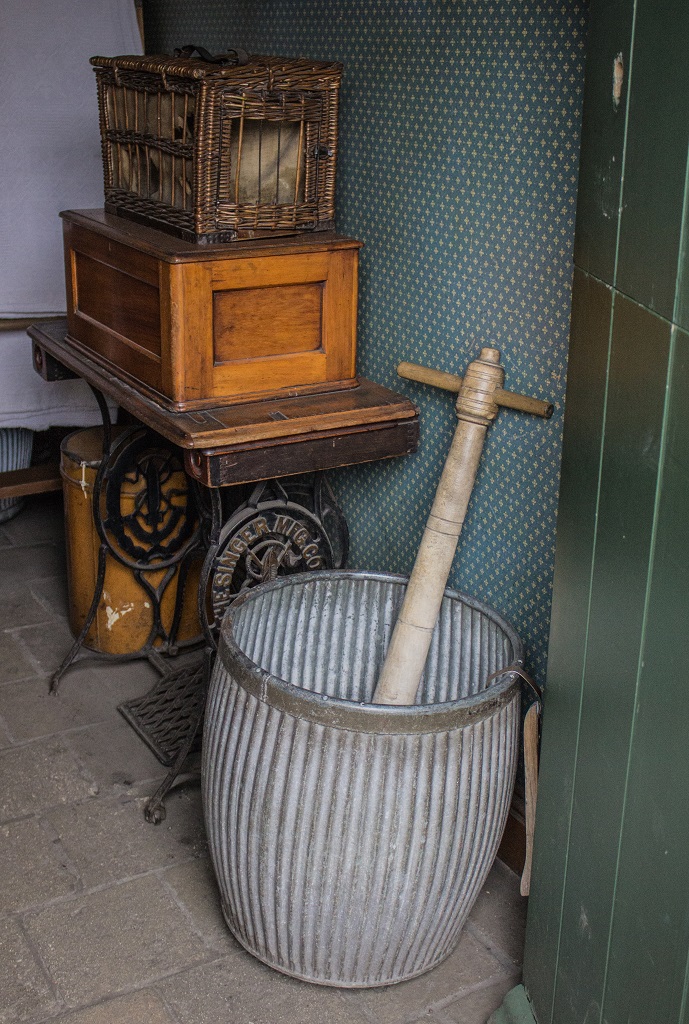
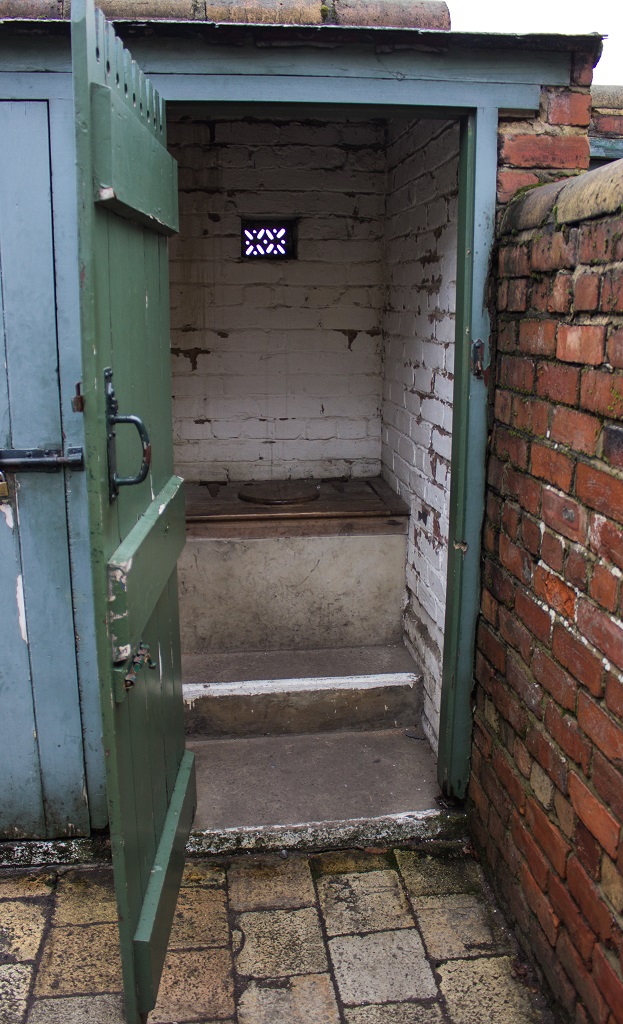
Sincere thanks to Sara for sending me photos shown below of her great, great grandfather's shop 'The Golden Teapot' at 146/8 John Street, Blaydon. He was William M Hopper (Willie Hopper) and the date would be around 1911. The top left photo also shows wife Mary and Daughter Alice. Top right also with an unidentified young boy. Underneath is an older photo which shows street number 160 which may have been earlier premises in John Street but could have been elsewhere. It is thought this shows Willie as a young boy with his father James Henry Hopper. Touching to see the patriotism that existed then too. If anyone has more information please get in touch. Photos sent October 2019.
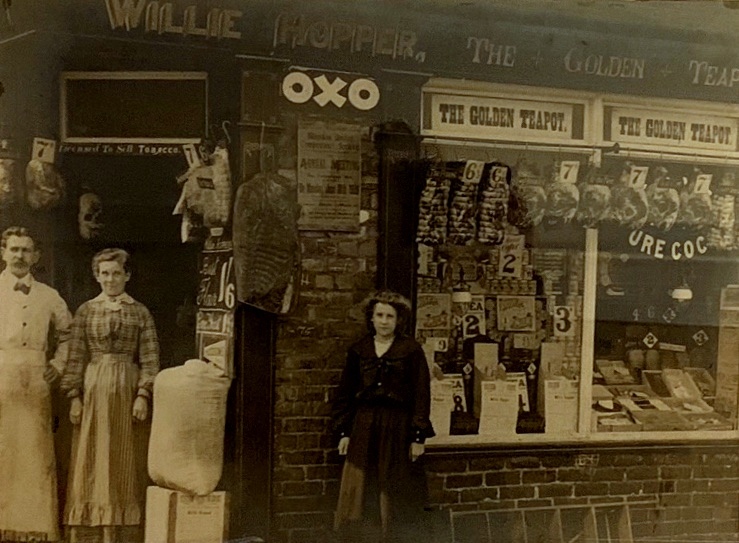
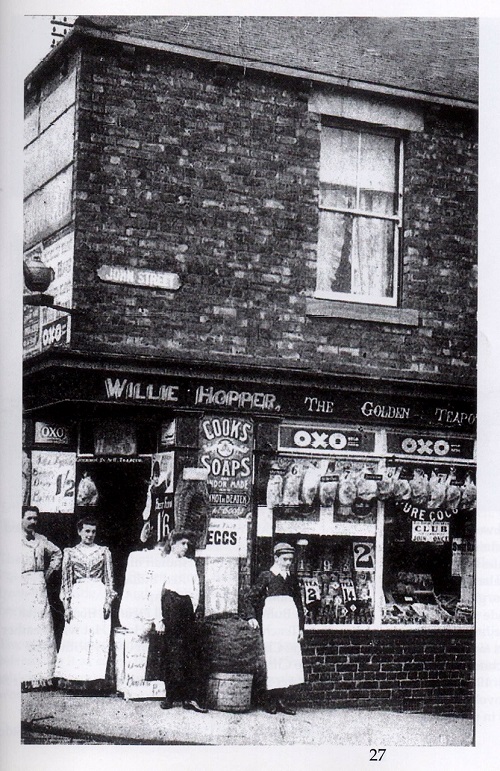
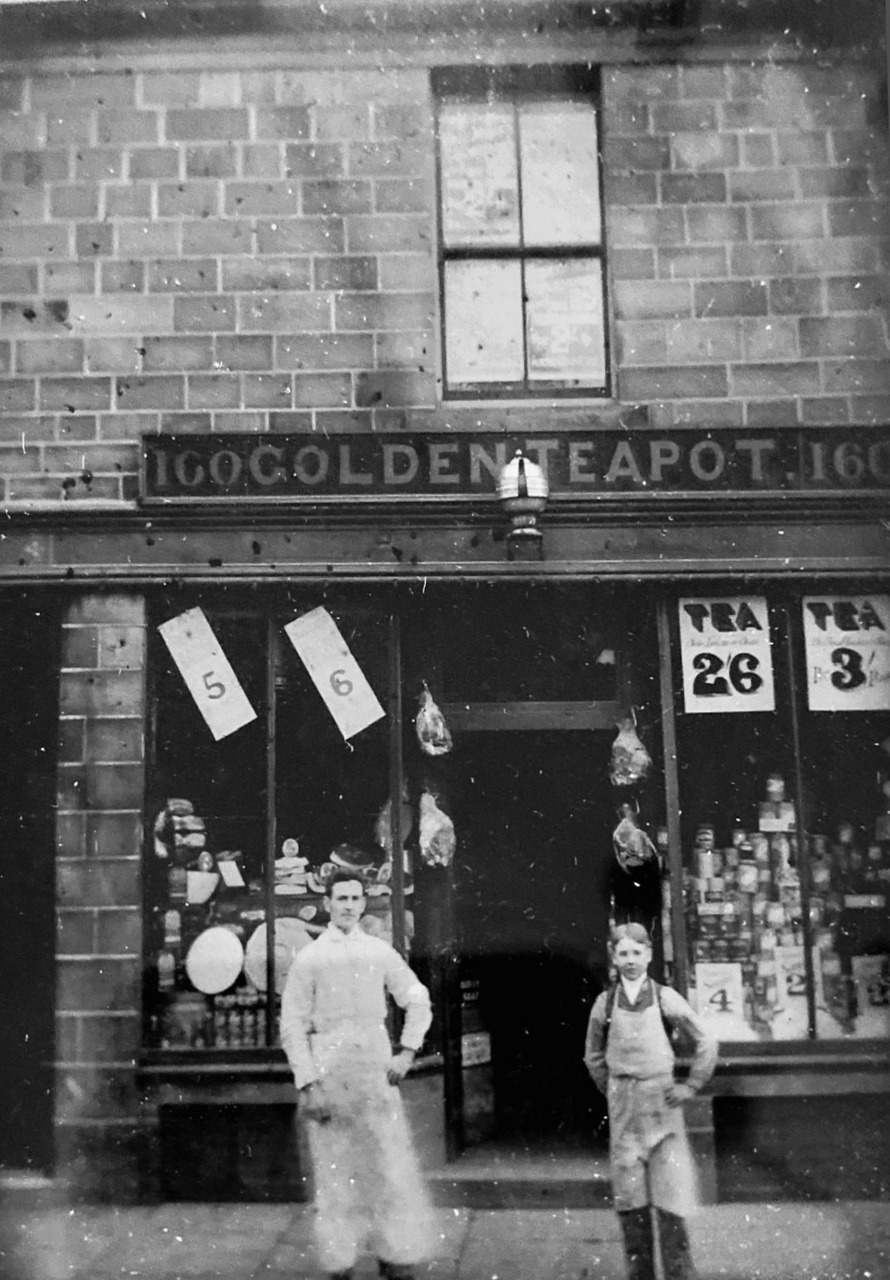
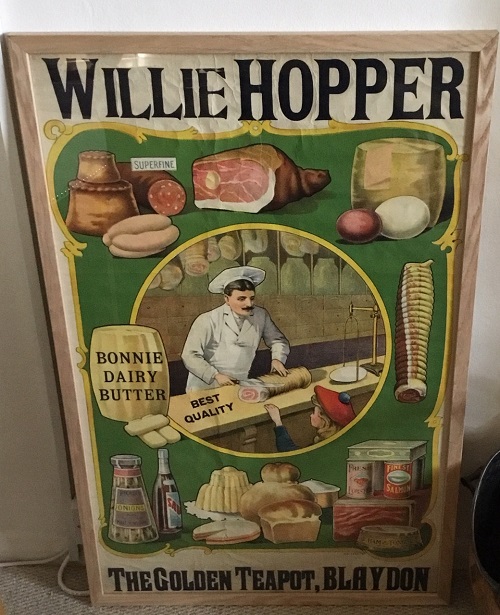
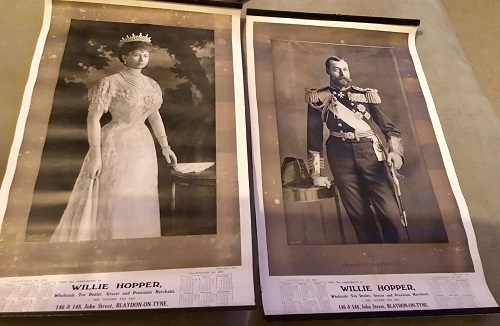
Thanks to Ken Roddham for sending two atmospheric night photos. One looking east to Stella Power Station from Newburn Bridge and the other the view downriver to Newcastle in the distance, from under Scotswood Bridge.
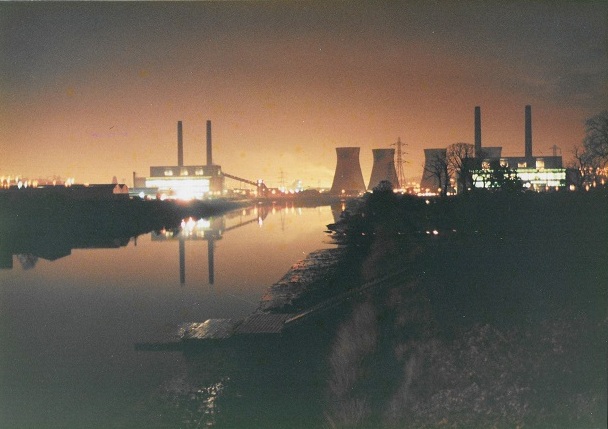
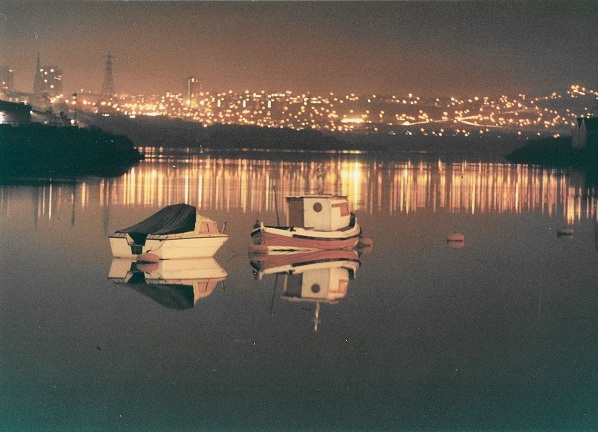
Thanks to Brendan O'Neill for sending two photos. One of the O'Neill brothers, Billy, Patsy and John of Thomas Terrace, Old Blaydon taken in in 1930. The second is of brothers Don and Jack Percy from their army days. Jack went on to own Old Blaydon's favourite toy and model shop.
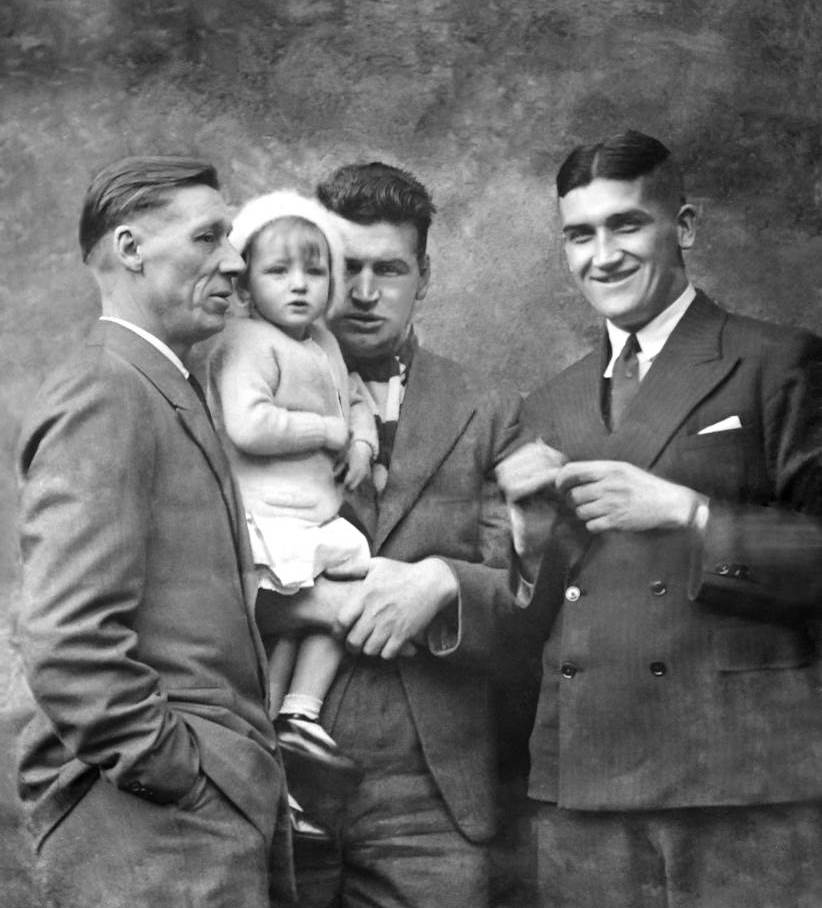
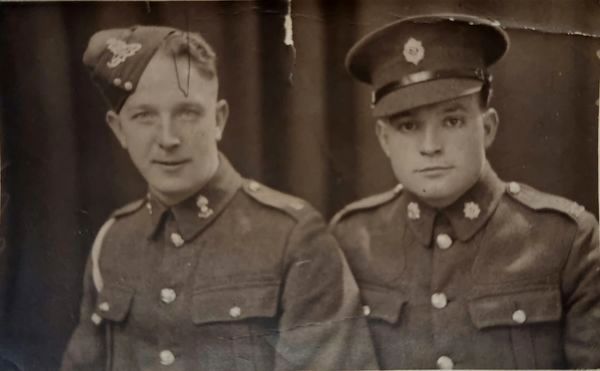
Thanks to Hazel who contacted me May 2022 with some nice memories of old Blaydon. She has happy memories of those days. Her family lived in George Street and Edward Street. She remembers a small Co-op shop on the corner of George Street and Shibdon Street. As a very small child she remembers a building (not named) immediately to the south east of Edward Street. It is arrowed on the map below. She remembers seeing a woman there who was dressed like a nurse with one of those starched caps with a large triangle down the back. Was it a nursery or part of a school or perhaps a clinic? Does anyone have more information?
Thanks to Lilian, originally of Thomas Terrace, who got in touch January 2023 to advise this was a Nursery.

Roly Veitch
Last updated - 14th January 2023
For more information on our local area history, our unique dialect, our wealth of dialect songs and other topics please visit the home page menu - link below.
Back to Home Page